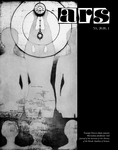
Journal ARS 53 (2020) 1
Zuzana BARTOŠOVÁ
Between Paris and Bratislava I. French-Slovak and Slovak-French Relations in Fine Arts During the Sixties of the 20th Century (Part 1 – Segment)
(Summary)
In the long term, the visual art in Czechoslovakia (including Slovakia) was oriented towards Paris, which was also true after the end of WWII. The former Czechoslovakia attracted the attention of European art critics including the French ones in the early 1960s, partly due to the links between Czech cubism and local interwar avant-garde and Paris and partly due the contacts established by international art community at the AICA (Association internationale de critique d’art) congress in Warsaw in 1960. After the end of the congress, the participants visited Czechoslovakia. On their way to Prague they stopped in Žilina, where they became familiar with the work of Ľudovít Fulla, a key representative of inter-war avant-garde, and subsequently also in many historic Moravian and Czech towns. In Prague they met neo-avant-garde community of artists and art critics. It was probably here that the idea came to organise a future AICA congress in Czechoslovakia. It was held in 1966 in Prague and concluded in Bratislava. In the meantime, French-Slovak and Slovak-French relations witnessed a few crucial events. In the spring of 1964, a young Slovak artist, Alex Mlynárčik, visited Paris and sought out Pierre Restany, the prominent figure of New Realism. As the only Slovak artist he had an opportunity to experience the authentic creative environment of European variant of Pop Art, meet its protagonists and their work, which, for quite a long time, became his source of inspiration. His Paris experience was also reflected in a dematerialised work Happsoc I (1965) and its manifesto, prepared in cooperation with Zita Kostrová and Stano Filko, as well as in his Permanent Manifestations, displayed at the Raymonde Cazenave Gallery in Paris (1966) under the auspices of Pierre Restany. Another work from the series of his Permanent manifestations was prepared for the participants of AICA congress (1966) in Bratislava. In public toilets in the city centre he installed seven mirrors labelled “Homage” to St Anthony, Hieronymus Bosh, Gabriel Chevallier, Godot, Michelangelo Pistoletto, Stanislav Filko and the urine itself. The exhibition was opened by Pierre Restany and Michel Ragon. It was Mlynárčik’s protest against official exhibitions of Slovak fine art mounted on the occasion of AICA congress, which presented reality through traditional media of painting and sculpture, moreover, in some cases even with the touch of socialist realism. Pierre Restany continued in promoting Mlynárčik’s work: In Paris he presented his Permanent manifestation II entitled “Temptation” (1967), made in cooperation with Miloš Urbásek, and included his work in the collection for international exhibition of current art tendencies Superlund in Lund, Sweden. Restany was a regular contributor to Domus magazine, published in Milan. In his 1967 article titled “Prague” he informed readers about current artistic life in Prague, however, he also mentioned three young Slovak artists, Stano Filko, Miloš Urbásek and Alex Mlynárčik. In 1967, a few artists from Slovakia took part in the 5th Paris Biennial of Young Artists. The most successful one was a medallist Karol Lacko. Based on his award he was offered a study stay in Paris-based mint in 1970 during which he created several medals, which are still on offer. The relationship between Mlynárčik and Restany gradually turned into a warm friendship, which is evident in a number of letters in which the artist asks the critic for his opinion and advice. Mlynárčik spent the spring of 1968 in Paris where he prepared for his participation in the exhibition at the Châtillon des Arts. Alongside Pierre Restany he took part in the student occupation of the Sorbonne university during the events of May 1968. The final part of the paper focuses on the international exhibition of young artists titled Danuvius, which was to take turns with the Paris Biennial of Young Artists. However, the exhibition was held only once; the exhibition opening was postponed as a result of the invasion of Czechoslovakia by Warsaw Pact army in August 1968. Pierre Restany took an active part in exhibition preparation, he was a member of international jury and informed about the exhibition in Domus magazine as well as in Výtvarný život. Apart from standard sources, the paper also uses archive materials, namely the estate of Pierre Restany deposited in the Archives de critiques d’art at the University of Rennes and documents (correspondence and manuscripts) from Alex Mlynárčik’s private archives. The paper also draws on the conference proceedings “Le demi-siècle de Pierre Restany” (Ed. Richard Leeman, INHA, Paris 2009).